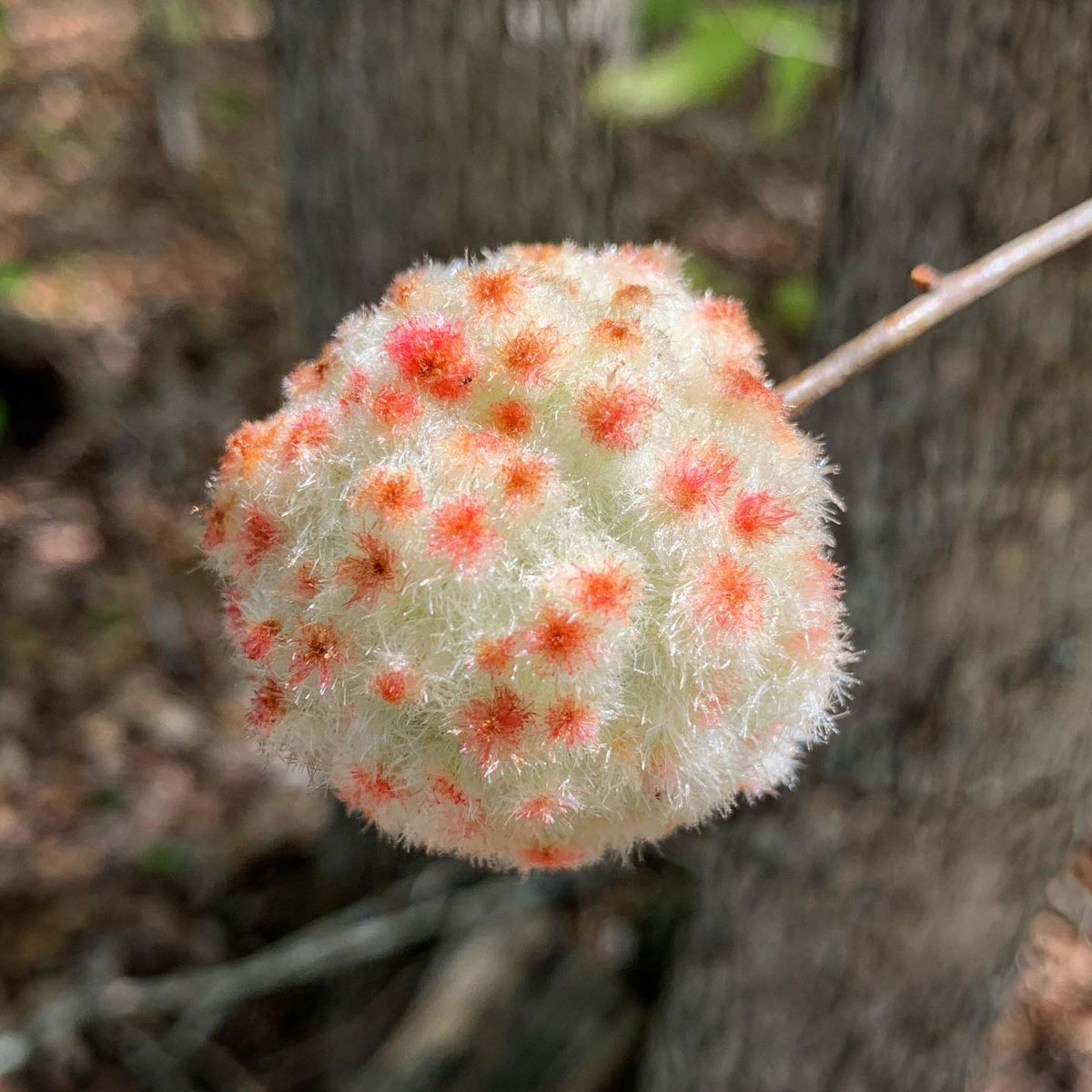Well.
WELL.
This is not some fun candy concoction from a carnival folks. No, no, no. This contains larvae of the Wood Sower Wasp. Eeeeeew.
This wasp is harmless, and the gall is harmless to the tree. The female lays her eggs in a ring-like cluster. Her punctures produce a secretion that encourages the growth of this fuzzy gall. Inside are all of the “seeds” which are the insects in pupae. Once they are ready to “hatch” they gnaw a hole in the hull and work their way out. NATURE IS WEIRD and occasionally freaky.
But I wanted to know what causes this gall to form? How does it work? Well, according to Texas A&M Agrilife Extension, “The galls, or tumor-like growths, are produced by the tree in response to chemicals injected into it by an adult or larval gall-making insect. The shape of the gall is determined by the chemicals used by each species of gall-maker. Galls can be round and dense, woolly, fuzzy, veined, bullet-shaped or horned.”
Size: Gall is about the size of a golf ball Family: Cynipidae Habitat: The Wool Sower Wasp typically prefers white oak and chestnut oak to lay its eggs on. Identification: Fuzzy, white or light green with pink, orange spots, which turn more brown as it ages.










